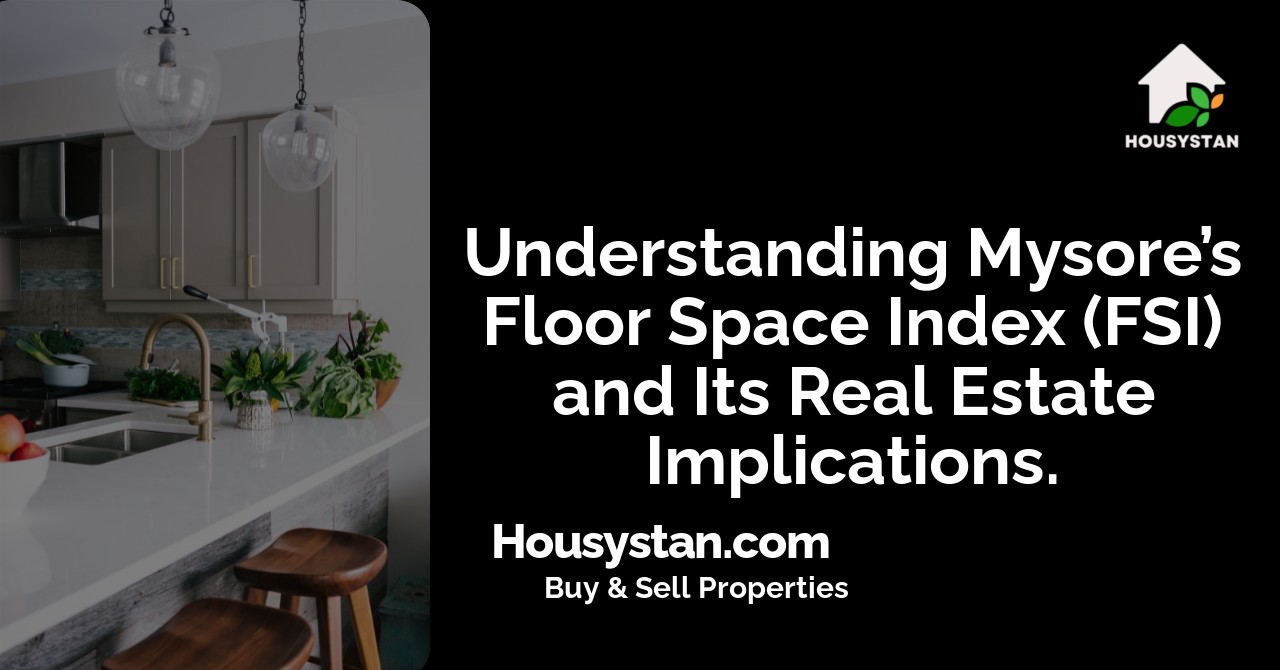Understanding Mysore’s Floor Space Index (FSI) and Its Real Estate Implications
Read latest blogs and articles from Housystan

The Information mentioned here was last updated on:
27/11/2025Understanding Mysore’s Floor Space Index (FSI) and Its Real Estate Implications
Mysore, a city renowned for its rich heritage and burgeoning infrastructure, has become a hotspot for real estate investments. A crucial aspect that shapes property development here is the Floor Space Index (FSI), also known as Floor Area Ratio (FAR). Understanding FSI is essential for anyone considering buying, selling, or constructing real estate in Mysore, as it plays a pivotal role in determining how much built-up area is permissible on a given parcel of land.
The FSI is essentially a ratio that dictates how much floor area can be constructed relative to the total area of the plot. For instance, if the local municipal authority in Mysore sets the FSI at 2.0 for a particular zone, and you own a 2,000 square foot plot, you are eligible to construct a building with a total floor area of 4,000 square feet. This calculation is instrumental for architects, developers, and property buyers who wish to maximize their investment while adhering to city regulations.
- Verified Tenants/Buyers
- Unlimited Property Listing
- Zero subscription/charges fee
Mysore’s urban planning authorities periodically review and update FSI norms to balance growth with infrastructure capabilities and environmental sustainability. Different zones across Mysore—residential, commercial, or mixed-use—have specific FSI regulations. The city’s central business districts may allow higher FSIs to encourage vertical development, while peripheral or heritage zones may have lower permissible limits to preserve character and prevent congestion.
For property owners and investors, a clear grasp of FSI translates to smarter decisions. A higher FSI allows for taller or more extensive structures, which can increase rental yields and resale values. Conversely, areas with restricted FSI often retain a quieter, less crowded ambiance, which may appeal to certain homebuyers seeking tranquility. Before embarking on any construction project in Mysore, consulting the latest FSI guidelines from the Mysuru City Corporation or a local real estate expert is highly recommended.
In summary, Mysore’s Floor Space Index directly influences real estate growth, the skyline, and the market value of properties. Staying updated on FSI norms ensures compliance and maximizes the potential of your investment in this vibrant, evolving city.